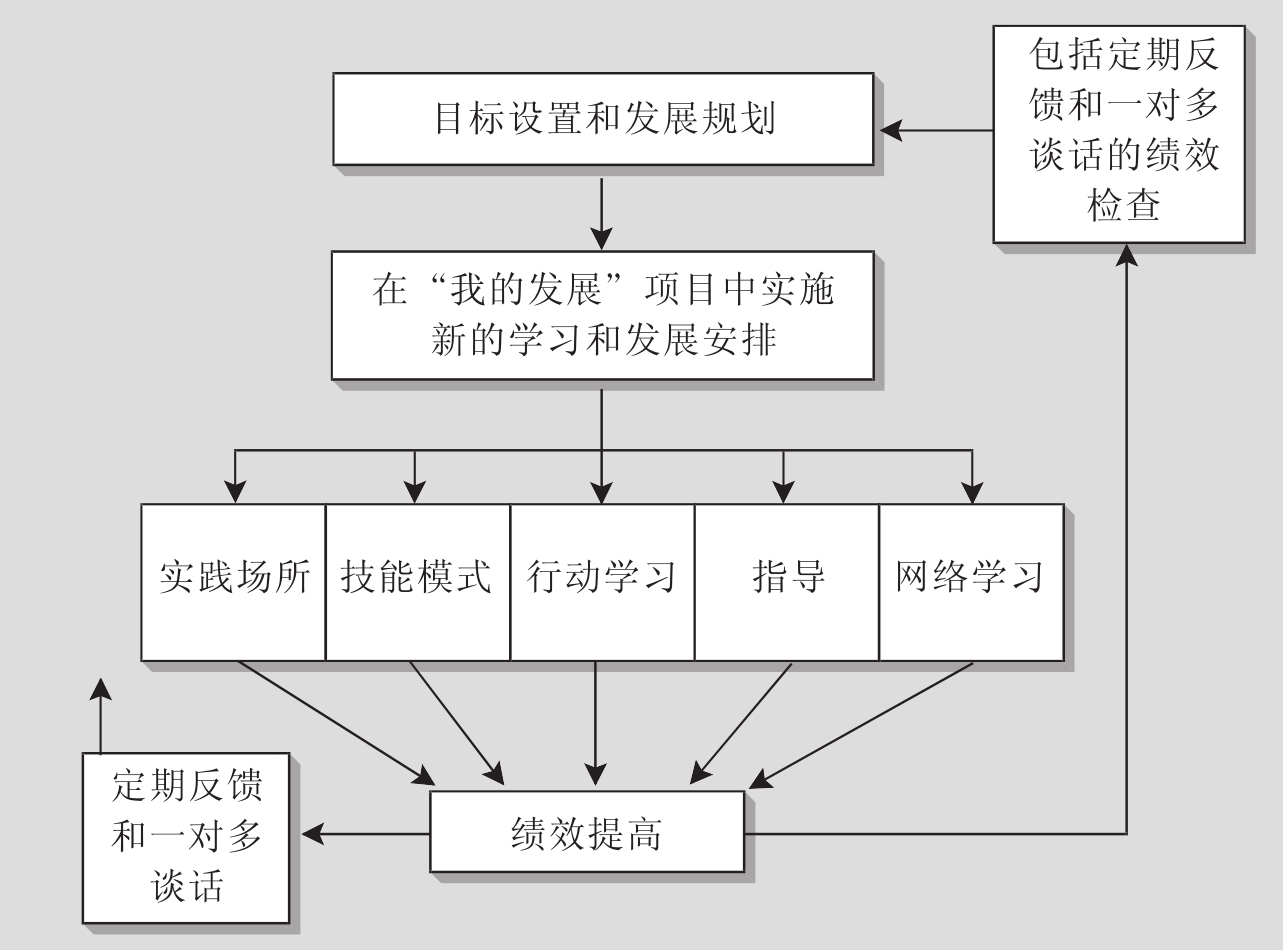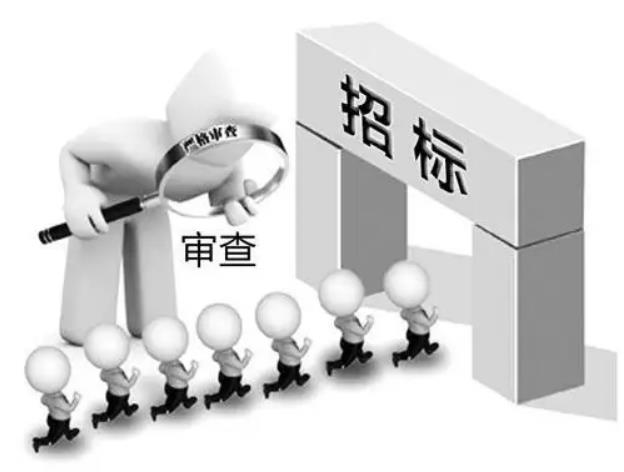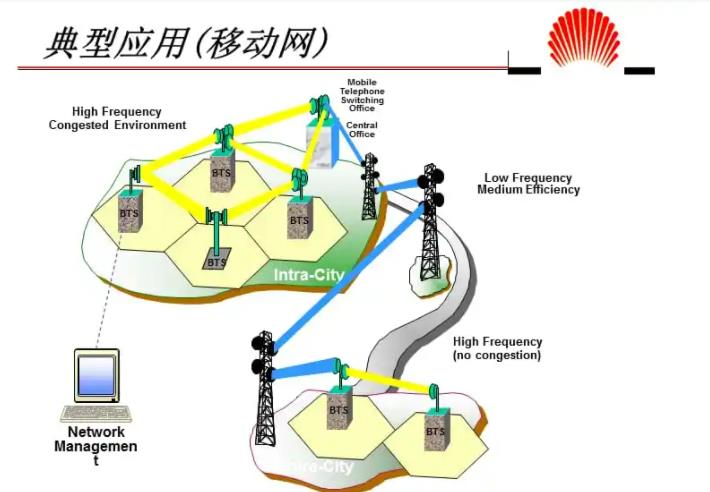案例研究10.2 邮件能够传递吗:英国皇家邮政的变革管理
诊断:现状
英国皇家邮政集团是英国最负盛名的投递公司。它们的品牌,英国皇家邮政(Royal Mai)l、世界包裹服务(Parcelforce Worldwide)和邮政局(Post Office)在业界和国内消费者中都很有知名度。该集团服务于英国的每一个角落,并以其社区政策引以为豪。在英国皇家邮政集团中,强烈的服务意识是其文化的主要原则。这则案例研究集中在,英国皇家邮政这个商务单元是如何通过参与群体管理发展项目来应对挑战的。
英国皇家邮政每天要收集、处理和分发8200万邮件到2700万个地方。但是,要在竞争环境中得以生存,这些活动只是该集团需要变革的一部分。尽管商务活动的目标很简单——就是收集和分发信件和包裹——但是,过程与系统的处理却非常复杂。投递监管局作出的决策所产生的影响非常重要。投递监管局的目标是要在投递业内增加竞争和消费者选择。英国皇家邮政公司害怕的是,投递监管局作出的决定可能会影响其提供单一价格服务的能力。但是,无论监管者最后做出的决策是什么,有一件事是确定无疑的,即未来会发生变化,更多的竞争对手将介入到投递业。这意味着,英国皇家邮政公司必须加强应对新挑战的步伐和决心。在2003年11月公布的一则消息中,英国皇家邮政集团的主席,阿兰·利顿说道:
今年剩下的时间里,我们要完成的主要任务是尽快在英国皇家邮政公司实行运营变革,转变为单一的日常投递工作,提高邮件中心的效率,使交通运营流水线操作。我们再也经不起拖延。
为了实现持续的获利能力,主席分析了进行操作变化的需求。集团的首席执行官,亚当·克罗泽肯定,这种变革的需求是“在消费者服务领域实现长期可持续改进的唯一方式,而且能为商务运营产生足够的现金流”。
英国皇家邮政实施变革容易吗?
现在,英国皇家邮政是英国雇用男性员工最多的雇主之一,共雇用了21000名员工,其中81%为男性。员工的平均服务期很高,有的工人还是来自同一家庭的几代人。从组织历史来看,该组织是按照命令和控制的层级体系来运营的,制定决策的中心(首长办公室)与地方办公场所是区分开了的。决定制定是一种“向下”地传达程序执行的指令。这产生着影响时,组织被“分裂化”为相互分离的部分和区域。这种机器似的官僚层级所产生的一种后果就是,投递工人会感觉到,他们不得不对命令作出反应并遵循命令,而不是从中发现乐趣、挑战以及质疑正在从事的工作。官僚制度通常会产生消极的员工,他们不会从事改进商务的活动。在这种环境下,不满会滋生出有力的信息领导者,而在英国皇家邮政公司,这是通过非官方的、影响消费者服务和利润的罢工活动来实现的。
商务的核心是收集、分类和分发邮件,那么就毫不奇怪,人们对于修订和提高运营系统给予极度重视。改善计划似乎一个接着一个,在组织内导致了“潮水般的”变革,产生了一定的“倡导疲劳”。此外,变革倾向于自上而下地进行,反而强化了管理的命令和控制风格。
对英国皇家邮政公司的现状可以总结如下:
■拥有社会影响力的,拥有历史和传统的服务提供者;
■社区介入,尤其是在乡村;
■迷恋传统商务模式和工作方式;
■具有典型命令和控制管理模式的官僚组织;
■缺乏技能的男性员工占主导;
■挑战员工关系的环境;
■过程主导的组织;
■以往的变革是局部的、以倡导为基础、自上而下发生的;
■在外部环境中面临剧烈变革,越来越激烈的竞争以及监管者越来越多的介入。
建立远景——需要做什么
在阿兰·利顿和亚当·克罗泽的坚强领导下,英国皇家邮政集团明确了为实现商务重振应该采取的措施。其中一个关键部分就是通过将英国皇家邮政集团改造为一个愉悦的工作场所来重新焕发工作人员的活力。他们认识到,这需要进行文化的变革。为了在运营层面获得成功,公司要吸收每一位员工的才能和经验。为此,就必须要关注从以过程为基础到以人为主的变革。他们发现,在能力构造中,鼓励员工参与商务塑造是很重要的,但这需要改变管理风格。

图片:Philip Craven/Travel Ink
在对管理风格进行变革的同时,商务活动似乎只关注那些能产生重要影响的问题。在一项创造更大自由的变革中,决策及目标制定的责任转移到了运营经理们的手中。在那些存在障碍的地方,经理们希望能移除这些障碍,也希望获得必要的支持。在这个新纪元里,很重要的是,经理们要能够最大化地利用资源,通过管理人员的绩效来推动商务发展。
经理发展
集团公司已经认识到,为了满足商务需求,经理们必须具有以下五个关键能力:
■激励人;
■关注行动;
■寻求改进;
■推动目标实现;
■掌握所有权。
于是,新的管理发展项目被创造出来,旨在成为变革的主导机制。给予经理们适当的技能和自信度,使之推动商务绩效的改进,以及让英国皇家邮政集团成为一个了不起的工作场所,这是推动发展的主要因素。不断增加的个人所有权和责任对于商务目标的实现,对于文化变革,以及对于旨在反映新管理风格的项目设计都是非常重要的。新的方法在以下四个方面区别于以往的旧方法:
■其焦点是核心管理技能,尤其是人员管理技能。
■发展活动更紧密地与工作场所相关联——在内容及实施上——以支持学习的转变,并提供立竿见影的商务利益。
■该项目包括多种多样的发展活动,以迎合不同的学习偏好和环境。
■它由每个人都要遵循的核心部分所组成,还包括量体裁衣为个体管理人员的需求所准备的活动。
组合方法可以使经理们能够选择出自己喜欢的发展活动,而设计这样一个组合方法,不仅要以有效发展为目标,也要致力于建立发展需求的所有权。将学习和发展融入到日常的工作挑战中以及经理们的优先权中,可以使经理们在做出现实工作进展的同时得到自我发展。

如何实现?
由于这是一个完全不同的商务发展方式,经理们会参加一个“一次性的”发起活动,称为“我的发展”。这个活动旨在:
■让经理们了解这个发展项目;
■向经理们提供不同发展活动的第一手体验;
■沟通经理们的价值观,支持商务活动,强化经理们的期望;
■提供当前商务轰动的最新信息,并为执行管理团队的成员提供优先权;
■帮助经理们认识其发展优先权,以及这个项目将如何有助于他们。
经理们还被引荐给发展计划者,帮助他们构建行动计划,并给予他们各种发展活动的信息:
■实践工作场所——以教室为基础的培训,开展富有影响力的议题,要求在商务活动中迅速展开,例如,健康和安全问题、多样性问题等。这些可能在工作场所以外的地方开展,但关注于真正的工作中的挑战。
■技能模块——在工作场所中,对最多20个人的群体开展的90分钟的小单位的培训活动。这是动态的、愉悦的、针对发展的培训。技能培训关注于离散的技能模式,如给予反馈、决策制定、自信武断以及合作工作等。
■行动学习——经过几个月的工作以后,一群经理人聚在一起解决他们认为真正重要的、妨碍其工作的问题。这个群体全心倾听、给予支持和提出挑战,以帮助经理人采取行动。经理人要求思考和反省其活动,并在随后的会议中向群体汇报进展状况。
■训练——运用外部训练来释放个体潜能,使其绩效最大化。通过与教练的合作,经理人发现并解决重要的绩效问题,应对领导挑战。
■E—学习——经理人能够获得多种学习产品以在合适的时间、按照合适的进度进行网络学习。典型的产品包括:绩效管理政策、行为和出勤准则、风险评估、商务目标以及平衡记分卡。
每个商务活动都有独立的预算来支持经理人的年度培训,经理们可以自动获得大量的这种发展选择,例如,三种技能模式的培训、行动学习系列或者训练课程、获得12个月E—学习的技能组合。尽管这些活动是“独立的”,但事实上,经理们会选择那些互相补充的活动。例如,如果他们在挑战环境的管理中遇到困难,他们就可能选择在完成某种技能模式的同时进行训练。他们能够运用训练课程来思考如何运用在工作中学习到的东西,并计划出处理这些问题的战略。
成功实施
在试图进行更广泛的文化变革时,企业意识到了大量的缺陷。这个项目很容易被视为“又一种创新”或者是“美妙的提议”,而不是被视为一种促进商务绩效的重要驱动力。在那种大型的、地理分散的组织中,很难在组织内建立统一的理解和支持体系。在这种情况中,高级经理们通常不愿意全心支持该项目,除非有证据证明这个项目能够发挥作用、值得信赖。对于参与这个项目的经理人而言,对活动的选择以及项目的灵活性可能是极其重要但混淆不清的。事实上,从被管理到真正将个人发展的责任从组织转移到个体,这是一个彻底的转变。
为了解决一些潜在的问题,在提出目标的同时还提出了一些预备计划,以确保该项目:
■富有吸引力而且可信;
■有相关性和影响力;
■成为日常工作的一部分;
■自我管理;
■简单而易于实现。
证实其影响力的最佳方式是对项目和早期采取的措施进行评估:(1)检测其影响度;(2)公布结果。由于该项目具有动态性的本质,因此要采取现实的方法。在12~18个月以后将对经理人进行随机的抽样调查,而且要对不同组合的发展经验进行发展前和发展后的绩效测量比较。除了重要的关键绩效指标,还要求直线经理人评估行为变化状况,以做出全面的评估。
编后语
英国皇家邮政集团采取的学习机会新组合说明了,创新的管理发展实践将商务目标作为其核心。通过加强运营管理和提高获利能力,集团决定增强其经理们的能力,使其在追逐目标的同时展示出领导能力。通过致力于成为业界“最佳工作场所”,企业意识到了需要让所有的员工有效地共同工作——不仅是获利的,也是愉悦的。经理们需要扮演的基本角色是改变组织文化。而这一变化的里程碑就是新的发展项目。这要求,经理们要在自我发展中积极主动,运用学习偏好和学习方法(经理自己安排发展进度)、独立和控制(识别需求,选择适当的学习组合)以及合作工作(行动学习模式,训练)的学习准则。潜在的能量和激情是十分可观的,这使得每个人都相信英国皇家邮政集团能够实现目标。通过释放这些能量,该项目可以帮助经理们工作得更好,从而生活得更轻松。
你的任务
(1)为什么英国皇家邮政集团决定将管理发展作为变革的基础?
(2)你如何将项目推销给对此持批判态度的生产线经理?你会说什么以及如何去说?
(3)分析可能影响项目并妨碍其发挥完全效用的潜在障碍?
(4)以英国皇家邮政公司为例,讨论在大型官僚组织中进行变革的内在问题。
(5)描述该案例研究是如何运用学习的主要准则,并说明评估项目的方式。
注释与参考书目
1.Institute of Learning and Teaching,http://www.ILT.ac.uk.
2.Clements,P.and Jones,J.The Diversity‘Training Handbook’:A practical guide to understanding and changing attitudes,Kogan Page(2002),p.9.
3.Kennedy,Helena,QC Learning works-Widening Participation in Further Education,FEFC,June 1997,p.6.
4.Ufi Limited,Strategic Plan 2002-2005
http://www.ufiltd.co.uk/strategic[accessed 4.9.03],Section 2,p.1.
5.Burgoyne,J.,Cunningham,I.,Garratt,B.,Honey,P.,Mayo,A.,Pearn,M.and Pedlar,M.‘The debate starts here’in People Management in Perspective:A collection of key articles published in the last year on Training and Development,IPD,April(1999),pp.16-17.
6.Eraut,Michael‘Managers Hold Key to Developing Knowledge and Skills’,Professional Manager,March 1998,p.41.
7.Ibid.
8.Rainbird,H.,Munro,A.,Holly,L.and Leisten,R.The Future of Work in the Public Sector:Learning and Workplace Inequality,Working Paper no.2(2nd edition),ESRC Research Programme on the Future of Work,1999,p.68.
9.Nonaka,I.‘The Knowledge Creating Company’in Starkey,K.(ed.)How Organisations Learn,International Thomson Business Press(1996),pp.18-32.
10.Hicks,L.Gender and Culture:Attitudes Displayed by Managers in the Hotel Industry,Extract from an interview with hotelmanager for unpublished doctoral research(1991).
11.Van der Linde,K.,Horney,N.and Koonce,R.‘Seven Ways to Make Your Training Department One of the Best’,Training and Development,vol.51,no.8,August 1997,pp.20-8.
12.Pickard,J.‘Learning That is Far From Academic’,People Management,9 March 1995.
13.Coulson-Thomas,C.‘Knowledge is Power’,Chartered Secretary,January 1998,pp.24-5.
14.Nonaka,I.‘The Knowledge Creating Company’in Starkey,K.(ed.)How Organizations Learn,International Thomson Business Press(1996),pp.18-32.
15.Kolb,D.Experiential Learning,Prentice-Hall(1984).
16.Piaget,J.The Origins of Intelligence in Children,Norton(1963).
17.Tan,J.‘Knowledge Management-Just More Buzzards?’British Journal of Administrative Management,March-April 2000,pp.10-11.
18.Santosus,M.and Surmacz,J.‘The ABCs of Knowledge Management’,http://www.cio.com/research/knowledge/edit/kmabcs.html(p.1).
19.Kerr,M.‘Knowledge Management’,The Occupational Psychologist,no.48,May 2003,pp.24-6.
20.http:bprc.warwick.ac.uk/kmweb.htm l Knowledge Management[accessed 4.2.01].
21.Cohen,S.‘Knowledge Management’s Killer App’,Training and Development,vol.52,no.1,January 1998,pp.50-7.
22.Rockart,J.F.and Short,J.E.‘The Networked Organization and the Management of Interdependence’in Paton,R.et al.(eds)The New Management Reader,International Thomson Business Press(1996),pp.255-76.
23.Baker,M.‘The Knowledge People’,The British Journal of Administrative Management,March-April 2000,pp.18-19.
24.See,for example:Personnel Management articles,September/October 1995.
25.Cohen,S.‘Knowledge Management’s Killer App’,Training and Development,vol.52,no.1,January 1998,pp.50-7.
26.Koulopoulos,T.Smart Companies,Smart Tools,Van Nostrand Rheinhold(1997),p.54.
27.Harrison,R.Employee Development,Institute of Personnel and Development(2nd Edition,2000).
28.Santosus,M.and Surmacz,J.,op.cit.
29.Malhotra,Y.‘Why Knowledge Management Systems Fail:Enablers and Constraints of Knowledge Management in Human Enterprises’in Holsapple,C.W.(ed.)Handbook on Knowledge Management 1:Knowledge Matters,Springer Verlag,Heidelberg Germany(2002),pp.577-90.Can also be accessed http://www.brint.org/whyKMSFail.htm.
30.McBrierty,V.and Kinsella R.P.‘Intellectual Property in a Knowledge Society-The Role of the Universities’,Industry and Higher Education,vol.11,no.6,December 1997,pp.341-8.
31.Harrison,op.cit.
32.Mayo,E.The Social Problems of an Industrial Civilization,Routledge and Kegan Paul(1949).
33.Senge,P.The Fifth Discipline,Doubleday(1990),p.1.
34.Pedlar,M.,Boydell,T.and Burgoyne,J.Learning Company Project:A Report on Work Undertaken October 1987 to April 1988,Sheffield,Training Agency(1988).
35.Mintzberg,H.,Ahlstrand,B.and Lampel,J.Strategy Safari,Prentice Hall Europe(1998).
36.Garratt,B.The Learning Organization,HarperCollins(1994).
37.Burgoyne,J.‘Feeding Minds to Grow the Business’,People Management,21 September 1995,pp.22-5.
38.McCormack,B.and McCormack,L.‘Experiential Learning and the Learning Organisation’(Case 26)in Cases in Organisational Behaviour,Pitman Publishing(1994),pp.280-7.
39.Dolan,S.‘A Different Use of Natural Resources’,People Management,5 October 1995,pp.36-40.
40.Heracleous,L.‘Spinning a Brand New Cultural Web’,People Management,2 November 1995,pp.24-7.
41.Garvin,D.A.‘Building a Learning Organization’,Harvard Business Review,July-August 1993,pp.78-91.
42.Harrison,R.Employee Development,Institute of Personnel and Development,2nd edition 2000.
43.Mumford,A.‘Individual and organizational learning:the pursuit of change’,in Mabey,C.and Iles,P.(eds)Managing Learning,The Open University/Routledge(1994),pp.77-86.
44.Coopey,J.‘Crucial Gaps in The Learning Organization.Power,Politics and Ideology’,in Starkey,K.(ed.),How Organizations Learn,International Thomson Business Press(1996),pp.348-67.
45.Salaman,G.and Butler,J.‘Why Managers won’t Learn’,in Mabey,C.and Iles,P.(eds)Managing Learning,The Open University/Routledge(1994),pp.34-42.
46.Garratt,B.Learning to Lead,Fontana(1991).
47.Mayo,A.and Lank,E.The Power of Learning:A guide to gaining competitive advantage,IPD(1994).
48.Eysenck,M.‘Learning,Memory and Personality’in Eysenck,H.J.(ed.)A Model of Personality,Springer(1981),pp.169-209.
49.Hirsch,S.K.Using the Myers Briggs Type Indicator in Organisations,Second edition,Consulting Psychologists Press Inc.(1991).
50.Kolb,D.Experiential Learning,Prentice-Hall(1984).
51.Honey,P.and Mumford,A.The Manual of Learning Styles,Third edition,Honey(1992).
52.Watson,J.B.Behaviourism,JB Lippincott(1924).
53.Pavlov,I.Conditioned Reflexes,Oxford University Press(1927).
54.Selye,H.The Stress of Life,McGraw-Hill(1956).
55.Thorndike,E.L.The Fundamentals of Learning,Teachers College,New York(1932).
56.Skinner,B.F Science and Human Behaviour,Macmillan(1953)and Skinner,B.F.About Behaviourism,Jonathan Cape(1974).
57.Stewart,S.and Joines,V.TA Today.A New Introduction to Transactional Analysis,Lifespace Publishing(1987).
58.Armstrong,M.Employee Reward,CIPD,May 2002.
59.Miller,N.E.and Dollard,J.C.Personality and Psychotherapy,McGraw-Hill(1950).
60.Gallwey,W.T.The Inner Game of Golf,Jonathan Cape(1981),p.19.
61.Kohler,W.The Mentality of Apes,Harcourt,Brace and World(1925).
62.Tolman,E.C.Purposive Behaviour in Animals and Men,The Century Co.Appleton-Century Crofts(1932).
63.Piaget,J.The Language and Thought of the Child,Harcourt,Brace and Co.(1926).
64.http://www.bksiyengar.com[accessed 10.10.03].
65.Glaser,R.‘Learning Theory and Instruction’,Paper for International Congress of Psychology 1992,cited in Assessment Issues in Higher Education(Report produced for the Department of Employment by Atkins,M.J.,Beattie,J.and Dockrell,W.B.(1993)).
66.Davis,L.Experience-based Learning within the Curriculum,Council for National Academic Awards(1990).
67.Kolb,D.A.Experiential Learning:Experience as the Source of Learning and Development,Prentice-Hall(1985).
68.Kolb,D.A.,Rubin,I.M.and McIntyre,J.M Organizational Psychology:An Experiential Approach to Organizational Behaviour,Prentice-Hall(1984).
69.Kline,Nancy Time to Think,Ward Lock(2001),p.35.
70.Hamblin,B.,Keep,J.and Ash,K.Organisational Change and Development:A Reflective Guide for Managers,Trainers and Developers,Financial Times Prentice Hall(2001),p.5.
71.Coghlan,D.and Brannick,T.Doing Action Research in Your Own Organization,Sage Publications(2001).
72.Thornhill,A.,Lewis,P.,Millmore,M.and Saunders M.N.K.Managing Change:A Human Resource Strategy Approach,Financial Times Prentice Hall(2000).
73.Honey,P.and Mumford,A.The Manual of Learning Styles,Third edition,Honey(1992).
74.Honey,P.‘Styles of Learning’in Mumford,A.(ed.)Handbook of Management Development,Fourth edition,Gower(1994).
75.Eysenck,M.‘Learning,Memory and Personality’in Eysenck,H.J.(ed.)A Model of Personality,Springer(1981),pp.169-209.
76.Hirsch,S.K.Using the Myers Briggs Type Indicator in Organisations,Second edition,Consulting Psychologists Press Inc.(1991).
77.Mayo,A.and Lank,E.The Power of Learning:A Guide to Gaining Competitive Advantage,IPD(1994)pp.135-6.
78.Atkins,M,J.,Beattie,J.and Dockrell,W.B.,Assessment Issues in Higher Education,Department of Employment(October 1993),p.51.
79.Morgan,G.‘Emerging waves and challenges:the need for new competencies and mindsets’,in Henry,J.(ed.)Creative Management,Sage Publications(1991),pp.284-93.
80.Agor Weston,H.‘The Logic of Intuition:How Top Executives Make Important Decisions’,in Henry,J.(ed.)Creative Management,Sage Publications(1991),pp.163-76.
81.Isenberg,D.‘How Senior Managers Think’,Harvard Business Review,November-December 1984,pp.81-90.
82.West,M.A.Developing Creativity in Organizations,BPS(1997),p.135.
83.Goodman,M.Creative Management,Prentice-Hall(1995),p.86.
84.Boden,M.The Creative Mind,Abacus(1992).
85.Ibid.,p.245.
86.Henry,J.‘Making Sense of Creativity’,in Henry,J.(ed.)Creative Management,Sage Publications(1991),pp.3-11.
87.Goodman,M.Creative Management,Prentice-Hall(1995),p.86.
88.Wallas,G.The Art of Thought,Cape(1926).
89.West,M.A.Developing Creativity in Organizations,BPS(1997).
90.Goodman,M.,op cit.
91.Hurst,D.K.,Rush,C.and White,R.E.‘Top Management Teams and Organisational Renewal’,in Henry,J.(ed.)Creative Management,Sage Publications(1991),pp.232-53.
92.Argyris,C.Strategy,Change and Defensive Routines,Ballinger-Harper& Row(1985).
93.Hadfield,C.‘A Creative Education:How creativity and the arts enhance MBA and executive development programmes’,Art and Business,July 2000.
94.Clutterbuck,D.and Wynne,B.‘Mentoring and Coaching’,in Mumford,A.(ed.)Handbook of Management Development,Fourth edition,Gower(1994),p.156.
95.MacLennan,N.Coaching and Mentoring,Gower(1995).
96.Kalinauckas,P.and King,H.Coaching:Realising the Potential,Institute of Personnel and Development(1994),p.11.
97.Hardingham,A.‘Moments of Clarity’in People Management in Perspective:A collection of key articles published in the last year on Training and Development,IPD,April 1999,p.13.
98.Starr,Julie The Coaching Manual-The definitive guide to the process,principles and skills of personal coaching,Pearson Education Ltd(2003),p.30.
99.Whitmore,J.Coaching for Performance,Second edition,London:Nicholas Brealey(1996).
100.Grant,A.M.and Greene,J.Coach Yourself-make real change in your life,Pearson Education Ltd(2001),p.18.
101.Williams,D.I.and Irving,J.A.‘Coaching:An unregulated,unstructured and(potentially)unethical process’,The Occupational Psychologist,vol.42,April 2001.
102.Chapman,M.‘Foreward-Towards a Psychology of coaching’,The Occupational Psychologist Special Issue:Coaching Psychology,vol.49,August 2003.
103.Clutterbuck,D.and Wynne,B.‘Mentoring and Coaching’,in Mumford,A.(ed.)Handbook of Management Development,Fourth edition,Gower(1994),p.156.
104.‘Royal Mail’and‘Parcelforce Worldwide’are registered trade marks of Royal Mail Group plc and‘Post Office’is a registered trade mark of Post Office Ltd.
105.http://www.royalmail.com[accessed 21.11.03].
106.Allan Leighton,Current News Release,Royal Mail returns to profit but Chairman stresses need for operational changes,13.11.2003,http://www.Royalmallgroup.com/news/expandarticle.
107.Adam Crozier,Current News Release,Royal Mail returns to profit but Chairman stresses need for operational changes,13.11.2003,http://www.Royalmailgroup.com/news/expandarticle.
108.The copyright in the extracts from Royal Mail’s development programme used in this case study is owned by Royal Mail Group plc.
免责声明:以上内容源自网络,版权归原作者所有,如有侵犯您的原创版权请告知,我们将尽快删除相关内容。














